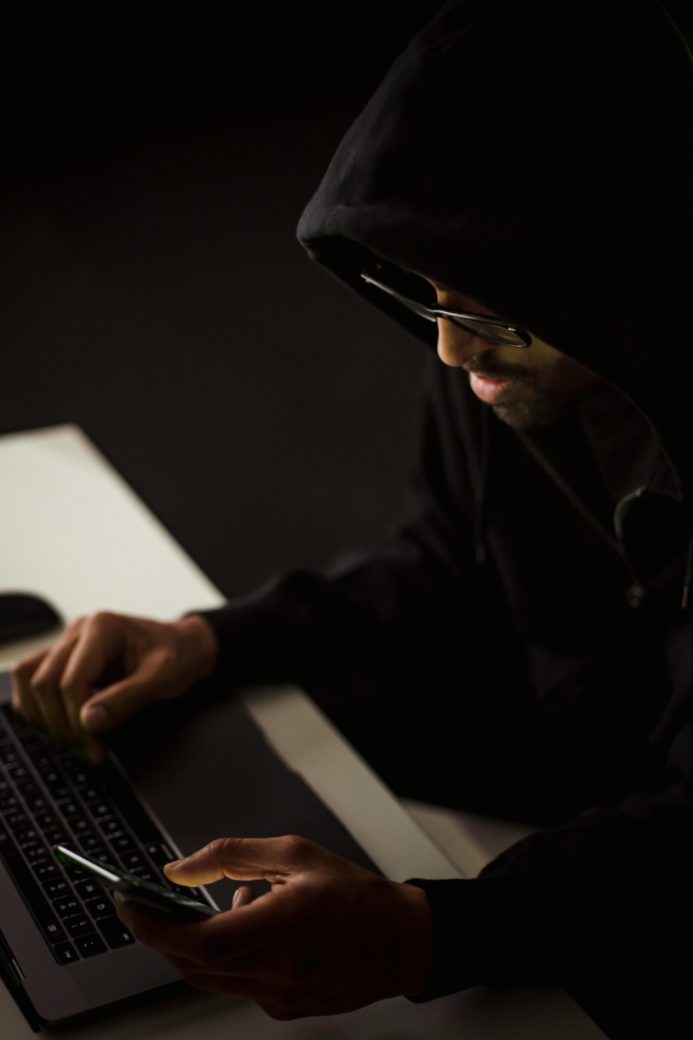In the ever-evolving landscape of social media, the mysterious practice of shadow banning has stirred up a whirlwind of controversy and confusion. But what is shadow banning, and why is it shrouded in secrecy? In this blog post, we will uncover the truth about shadow banning, its impact on users, and the ongoing debate surrounding this contentious issue. From prominent social media platforms like Twitter, Instagram, and Facebook to the steps you can take to prevent and reverse a shadow ban, we will provide you with a comprehensive understanding of this enigmatic phenomenon.
Table of Contents
Key Takeaways
Shadow banning is a form of censorship used by social media companies to prevent spam and inappropriate conduct.
Signs of a shadow ban include sudden drops in engagement, reach, and follower growth.
Tech companies deny using shadow banning but user mistrust persists due to lack of transparency and accountability on the issue.
Shadow Banning Explained

Shadow banning is a covert method of blocking users or content without notifying them, making their content invisible to others on social media platforms. For those who are shadow banned, the site appears to function as usual, allowing them to create posts and interact with other people’s content. However, to other users, the shadow banned individual seems to have vanished into thin air.
Despite the denials from various social media companies, the mysterious word “shadowban” still lingers in the minds of many users. Instagram, for example, has been accused of implementing an Instagram shadowban that hides content from non-followers, leaving users to wonder why their posts are receiving fewer likes and comments. Similarly, LinkedIn and YouTube have also faced allegations of shadow banning, with content creators expressing concern about the visibility of their posts and videos.
The Purpose of Shadow Banning
What motivates social media platforms to use shadow banning? The primary purpose of shadow banning is to prevent spam, inappropriate conduct, and other infringements of platform regulations without notifying the user. Shadow banning aids in maintaining platform security and consistency by making spam posts invisible to other users, thereby minimizing disruption.
In addition to combating spam, shadow banning is also used to moderate offensive behaviors such as hate speech, profanity, and the posting of offensive content. By reducing the visibility and reach of content from users who have transgressed the platform’s rules, shadow banning serves as an enforcement mechanism that aims to discourage rule-breaking behavior and preserve a positive and obedient community on the platform.
How Shadow Banning Affects Users
Shadow banned users often grapple with reduced engagement, limited reach, and challenges in gaining new followers, akin to being in a virtual purgatory. For example, on Twitter, shadow banning can result in a reduction in follower engagement, such as likes, replies, and comments, and can also make it more difficult for other users to discover and interact with your posts.
Similarly, on Instagram, a shadow ban can have severe consequences for users. Their content will not be visible on any feed, Explore, or hashtag pages unless the viewer is already following the user. And on Facebook, a shadow ban can lead to the algorithm concealing posts from followers or friends, making them only viewable when accessed through the user’s profile.
In essence, a shadow ban can significantly impede a user’s ability to grow their followers and engage with their audience on social media platforms, especially when platforms decide to shadowban users.
Learn more, visit What Is a Shadow Ban? And How Can It Affect Your Consumer Marketing Campaigns?.
Social Media Platforms and Shadow Banning
The murky waters of shadow banning have led to allegations against major social media platforms, such as Twitter, Instagram, and Facebook, of utilizing this practice to suppress content. These platforms often attribute the phenomenon to algorithms, technical errors, or ranking systems, rather than outright admitting to shadow banning.
The intensifying debate around shadow banning leaves users feeling frustrated and distrustful towards social media companies, which often respond to the issue in an evasive or vague manner. This lack of transparency fuels the controversy and leaves many questioning the true intentions behind these alleged practices.
Twitter and Shadow Banning
Twitter finds itself at the center of the shadow banning controversy, with many accusing the platform of suppressing conservative voices. In response to these allegations, Twitter has denied shadow banning based on political viewpoints or ideology. Instead, the platform has stated that they rank tweets and search results in order to address bad-faith actors, such as spammers and trolls.
Nonetheless, Twitter’s ranking system has sparked concerns among users, who fear it might unintentionally suppress certain perspectives or individuals. As the debate rages on, Twitter’s response fails to quell the growing concerns surrounding the potential impact of shadow banning on free speech and the democratic discourse on social media.
Instagram and Shadow Banning
Instagram, another giant in the social network world, has also been accused of using shadow banning. The platform employs a “demotion” system to limit the engagement of accounts that violate community guidelines, recommendations guidelines, or terms of use. This demotion system can have a significant effect on users, particularly social media influencers, who depend on engagement and visibility for their livelihood.
Instagram’s demotion system may be activated by actions such as posting ‘borderline’ content, using prohibited hashtags or banned hashtags, or failing to comply with community guidelines or terms of service. As a result, users who unknowingly cross these invisible boundaries may find their account status subject to a shadow ban, leaving them feeling frustrated and helpless in the face of this opaque practice.
Facebook and Shadow Banning
Facebook, too, has faced allegations of shadow banning, particularly in relation to content flagged as misinformation or potentially harmful. Facebook’s “demotions” involve reducing the reach of flagged posts without informing the publishers of these demotions. This lack of transparency has led to increased frustration and distrust among users, who feel that their content is being unfairly targeted.
In response to these accusations, Facebook has vehemently denied having a ‘shadow banning’ policy, insisting that there are no ideological issues involved. However, as with other social media platforms, the ongoing debate and lack of clarity surrounding the practice of shadow banning only serve to deepen the rift between users and the companies that wield such influence over their online experiences.
Identifying a Shadow Ban
Identifying a shadow ban can be challenging, given that its effects are subtle and can be easily confused with other factors. Some signs that you may be experiencing a shadow ban include:
Reduced post engagement
Followers not seeing your new posts
Conducting tests such as posting with a little-used hashtag and asking non-followers to search for it
By observing these indicators, you can help identify if you are experiencing a shadow ban.
Although determining the exact cause of a shadow ban may be difficult, vigilance and monitoring of engagement, reach, and follower growth can provide valuable insights into the existence of a shadow ban. By staying informed and taking proactive measures, users can better understand and navigate the murky world of shadow banning.
Signs of a Shadow Ban
Recognizing the indicators of a shadow ban can assist users in taking corrective measures and regaining control of their social media presence. Some common indicators of a shadow ban include a sudden drop in engagement, reach, and follower growth. These signs may be more pronounced for social media influencers or professional accounts that rely on consistent engagement for their livelihood.
It’s important to remember, however, that these signs are not definitive proof of a shadow ban. Other factors, such as changes in platform algorithms or user behavior, can also impact engagement and reach. Nevertheless, being aware of these potential signs can help users stay vigilant and take action if they suspect they are being shadow banned.
Testing for Shadow Bans
The methods for testing shadow bans can differ based on the platform and generally include using incognito mode, analyzing analytics, or posting with certain hashtags. For example, to test for a shadow ban on Instagram, users can post with a rarely-used hashtag and ask non-followers to search for it. If the post fails to appear in the search results, it may be an indication of a shadow ban.
Other methods, such as using incognito mode on Facebook or monitoring engagement metrics on Twitter, can also help users determine if they are being shadow banned. By proactively testing for shadow bans and staying informed about platform-specific practices, users can take control of their online presence and mitigate the impact of shadow banning on their social media experience.
Reasons for Being Shadow Banned
The reasons for shadow banning can differ across platforms but typically include violation of platform rules, posting inappropriate content, or demonstrating excessive or spammy behavior. Understanding these reasons and how they affect one’s social media presence is crucial for users seeking to avoid or reverse a shadow ban.
By familiarizing themselves with platform-specific guidelines and best practices, users can minimize their risk of being shadow banned and maintain a healthy, engaging social media presence. Moreover, understanding the reasons behind shadow banning can empower users to take control of their online experience and navigate the complex world of social media with confidence and ease.
Violating Platform Rules
One common reason for being shadow banned is violating platform rules, such as using bots or automated tools to interact with content or follow/unfollow users. These violations can result in a shadow ban, as they are often perceived as spammy or inauthentic behavior by the platform.
To avoid a shadow ban due to rule violations, users should familiarize themselves with the specific guidelines and terms of service for each platform and ensure that any automation tools they use are recognized as legitimate by the platform. By adhering to platform rules, users can maintain a genuine and meaningful social media presence and minimize their risk of being shadow banned.
Inappropriate Content
Another reason for being shadow banned is posting inappropriate content, including sexually suggestive, violent, or misleading posts. Platforms like Instagram and Twitter have strict guidelines regarding the type of content that can be shared, and violating these guidelines can result in a shadow ban.
To avoid being shadow banned due to inappropriate user’s content, users should be mindful of the content they post and ensure it adheres to the platform’s community guidelines and terms of service. By practicing content moderation and posting content that is suitable for a diverse audience, users can maintain a positive online presence and reduce their risk of being shadow banned.
Excessive Engagement
Excessive engagement, such as:
rapid following
unfollowing
liking
commenting
can also trigger a shadow ban on social media platforms. Engaging in these activities at a high rate can be perceived as spam-like behavior, potentially leading to a shadow ban and reduced visibility for the user’s content.
To prevent a shadow ban due to excessive engagement, users should:
Engage in natural and authentic interactions on social media platforms
Avoid rapid or repetitive actions that could be perceived as spammy
Foster genuine connections
Adhere to platform guidelines
By following these practices, users can minimize their risk of being shadow banned and maintain a thriving social media presence.
How to Prevent and Reverse Shadow Banning

Shadow banning prevention and reversal involve adhering to social media best practices and undertaking specific actions to lift the ban, like eliminating bots or taking a social media break. By adhering to platform guidelines and engaging in authentic interactions, users can reduce their risk of being shadow banned and maintain a healthy and engaging social media presence.
If a user believes they’ve been shadow banned, they must take steps to overturn the ban and regain control of their online presence. This may involve adjusting one’s behavior on the platform, removing any inappropriate content, or taking a break from social media to allow the algorithm to reset.
Best Practices for Social Media Use
The best practices for social media use include posting authentic content, avoiding spam, and adhering to platform rules and guidelines. By following these best practices, users can maintain a positive online presence, engage meaningfully with their audience, and minimize their risk of being shadow banned.
For example, on Instagram, users should avoid posting explicit or offensive content and refrain from using prohibited hashtags. Similarly, on Twitter, Facebook, and other social media sites, including online forums, users should abide by the platform’s rules and policies to ensure the integrity and authenticity of their social media presence. By adhering to these best practices, users can avoid shadow banning and maintain a successful online presence.
Steps to Reverse a Shadow Ban
If a user believes they have been shadow banned, there is no need to despair, as there are steps to reverse the ban. These may include eliminating bots, pausing activity on the platform, and adhering to optimal practices for social media usage. By taking these measures, users can regain control over their social media presence and restore their visibility on the platform.
Another effective strategy for reversing a shadow ban is to review one’s content and ensure it adheres to the platform’s terms and services. This may involve removing any inappropriate content, adjusting one’s posting habits, or taking a break from the platform to allow the algorithm to reset. By taking these steps, users can successfully reverse a shadow ban and reclaim their online presence.
The Controversy Surrounding Shadow Banning
Shadow banning’s controversy arises from its clandestine nature, causing user frustration and claims of political bias. Many users feel that the lack of transparency surrounding shadow banning allows social media platforms to wield undue influence over their online experiences, suppressing content and stifling free speech. As a result, the debate around shadow banning continues to rage on, fueled by accusations and counter-accusations from both users and tech companies.
Despite the controversy, tech companies often deny using shadow banning and attribute it to algorithms, technical errors, or ranking systems. While these explanations may not fully satisfy those who believe they have been shadow banned, understanding the reasons behind shadow banning and the steps that can be taken to prevent and reverse it can help users navigate the complex world of social media with greater confidence and control.
Criticisms of Shadow Banning
Critics argue that shadow banning, with its lack of transparency and potential for political bias, serves as a perilous tool for social media platforms. They contend that the practice allows platforms to suppress content and stifle free speech without being held accountable for their actions.
In addition to these concerns, critics also argue that shadow banning has a negative impact on users’ self-expression and their ability to engage with their audience on social media platforms. As the debate continues, the controversy surrounding shadow banning highlights the need for greater transparency and accountability in the world of social media.
Tech Companies’ Response to Controversy
In response to the controversy surrounding shadow banning, tech companies often deny using the practice and attribute it to algorithms, technical errors, or ranking systems. They assert that these systems are essential for maintaining a safe, positive user experience and preventing the spread of misinformation, hate speech, and other detrimental content on their platforms.
However, these explanations often fail to appease users who believe they have been shadow banned, leading to a growing mistrust between users and tech companies. As the debate rages on, the controversy surrounding shadow banning serves as a stark reminder of the power and influence that social media platforms wield over our online experiences and the need for greater transparency and accountability in this ever-evolving landscape.
Summary
In conclusion, shadow banning is a complex and controversial issue that has sparked heated debates among users and tech companies alike. By understanding the reasons behind shadow banning, recognizing its signs, and adhering to best practices for social media use, users can maintain a positive and engaging online presence while minimizing their risk of being shadow banned. As the controversy continues to unfold, it is crucial for users to stay informed, take proactive measures, and advocate for greater transparency and accountability in the world of social media.
Frequently Asked Questions
What does shadow banning do?
Shadow banning is a technique used to block or restrict users or their content from being seen by others without the user’s knowledge. It is used on online communities, bulletin boards, web forums, and social media platforms such as Instagram and TikTok in order to protect users from copyright issues, spam, threats, and inappropriate content.
How do I know if I am shadowbanned?
It’s difficult to definitively determine if you’ve been shadowbanned, however, you can look for signs such as a sudden and sustained drop in engagement or a lack of your posts appearing in hashtag feeds. Additionally, review your Instagram Insights for drops in followers that weren’t previously following you.
How is someone shadow banned?
Shadowbanning is a practice of blocking a user from an online community, either partially or fully, without the user being aware of it. This can take the form of restricting a user’s content from visibility to others, disabling account features, or placing a user on a ‘timeout’, thus hindering their access and reach within the platform.
How can I prevent and reverse a shadow ban?
To prevent and reverse a shadow ban, it is important to practice good social media habits and take proactive measures like removing automated accounts or taking a break from the platform.
What is the controversy surrounding shadow banning?
Shadow banning is controversial due to its secretive nature, leading to accusations of political targeting and frustration amongst users, despite tech companies denying any use of the practice.









